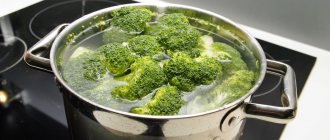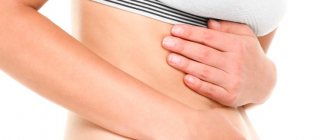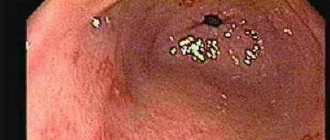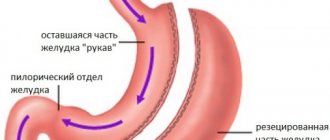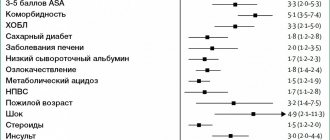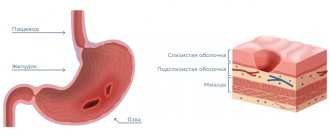Increased acidity is a process in which part of the gastric juice, whose specific gravity is more than half one percent, descends into the esophagus, where it irritates the esophageal mucosa. People with high acidity are characterized by symptoms such as a burning sensation in the chest, a feeling of acidity in the mouth (regardless of food intake).
- Briefly about the diet
- Diet principles
- Menu for high acidity
- Foods that increase acidity
- Menu for high acidity
- Diet recipes for high acidity
Most of us feel the same way from time to time. The reason lies in poor nutrition. For example, you ate food on the go, the food was too dry, or you preferred semi-finished and unnatural products. If uncomfortable sensations recur, or if this happens to you all the time, this indicates digestive problems. In this case, you can try a diet (nutrition) for high acidity. But, of course, the best option is to visit a therapist or gastroenterologist, especially when it comes to children's health.
Briefly about the diet
The cause of digestive problems sometimes remains a mystery to us. We don’t even suspect about them until obvious symptoms appear that change the quality of our life. Risk factors for high acidity:
- rare or irregular meals
- snacking on inappropriate foods
- excessive eating (large portions)
- food on the go
- fast food (McDonald's, etc.)
- semi-finished products
Strong, rich broths (even mushroom broths) are contraindicated in the diet for people with high acidity. Although some would-be experts recommend “hot stuff.” If the condition has worsened (symptoms have worsened), replace pickles and borscht with cream soups and soups with a mucous structure, for the preparation of which you take cereals such as rice or oatmeal.
For cooking, choose vegetables with minimal fiber content:
- carrot
- potato
- pumpkin
The following vegetables are not recommended:
- sorrel
- radish
- white cabbage
- radish
- ginger
Fruits with high acidity are acceptable, but they should be more sweet than sour. If symptoms worsen, you should not eat raw fruits; they are baked or boiled; there are even recipes on the Internet for fruit soups that are suitable for people with high acidity. You can puree the fruit or make a soufflé out of it.
It is possible to include meat in a diet with high acidity, but not fatty varieties. Meat can be prepared in the following ways:
- steaming (or in a double boiler)
- extinguishing
- boiling
In no case should you eat fatty meat if you have problems with acidity (for example, fatty parts of pork and rabbit). You cannot use a method of processing meat such as frying. Fatty foods are harmful because such food remains in the gastrointestinal tract for a long time, which can worsen the condition of a person with high acidity. We also get fat from oil (sunflower and butter), mayonnaise, various nuts, cream, peanut butter, potato chips, etc.
How can you tell if you have high or low stomach acidity?
An imbalance between the production of hydrochloric acid and its timely neutralization leads to an increase in the acidity of gastric juice.
You can determine this deviation at home by the following symptoms:
- attacks of heartburn TEXT_LINKS – begins to burn in the area of the esophagus after eating food (fatty, salty, spicy, sour);
- sour or bitter taste in the mouth after burping;
- nagging, dull or aching pain in the stomach area, radiating to the right hypochondrium;
- There is a periodic unpleasant burning sensation in the chest and throat;
- a feeling of fullness in the stomach, even with small doses of food eaten.
- Occasionally, a high level of acidity is manifested by such symptoms as: constipation, paroxysmal pain before defecation, nausea and vomiting shortly after eating.
- With increased acidity, heartburn begins after eating
What to do if you have high acidity?
It is possible to reduce acidity and normalize the normal functioning of the corresponding glands using complex therapy, which includes medications, diet and folk remedies.
Medications
To neutralize the acid, a number of medications are used, which are prescribed by the doctor after examination and confirmation of the diagnosis.
Table “Tablets to reduce acidity”
| Drug groups | Peculiarities | Name of the product |
| Alginates | Reduce the activity of cells that are responsible for the production of acids. Quickly eliminate the symptoms that accompany high acidity. Restore normal functioning of the stomach. | Phosphalugel, Maalox, Rennie, Almagel |
| Antacids | Laminal, Gaviscon, magnesium, calcium and sodium alginates | |
| H-2 histamine receptor blockers | Inhibition of histamine production (stimulator of acid production). Reducing the amount of acid produced. Protecting the gastric mucosa and normalizing pH levels. | Famotidine, Ranitidine |
| Proton pump inhibitors | Pantoprazole, Esomeprazole, Omeprazole |
The drugs do not suppress the production of all acid, but only that which the stomach cannot extinguish. In addition, the medications are intended for the healing of erosive and ulcerative processes caused by high acidity.
How to get rid of acidity using folk remedies
It is possible to remove negative manifestations and reduce the production of acid in the stomach thanks to alternative medicine methods. Remedies that have been proven over the years stabilize the functioning of the glands and help improve the general condition of ulcers or gastritis.
Herbal infusion
Grind plantain leaves, mint leaves, St. John's wort and dried herb (30 g each) in equal parts. Add knotweed and centaury (15 g each), caraway seeds (20 g), yarrow (10 g). Mix everything.
Place herbs (2 tbsp) in a glass jar and pour 1.2 liters of boiling water. After the drink has infused (at least 12 hours), strain and take ½ glass 3-4 times a day 40 minutes after meals.
Before use, the herbal decoction must steep for at least 12 hours.
Rowan and rosehip
Grind the berries in equal parts in a meat grinder or blender. 2 tbsp. l. Place the mixture in 500 ml of boiling water and cook over low heat for 9–12 minutes. The broth should sit for a day, after which it should be strained.
It is recommended to use the drug throughout the day. You need to drink at least 1–1.5 glasses per day (50 ml every 3 hours).
Rowanberry decoction helps normalize stomach acidity
The medicinal drink is a good remedy for heartburn during pregnancy. The growing uterus puts pressure on the stomach, which causes an increase in acidity and causes great discomfort. Rosehip and rowan have a gentle effect on a woman’s body and do not harm the fetus, unlike most pharmaceutical drugs.
Potato juice
Wash and dry 3 medium potatoes (pink varieties work well). Together with the peel, they must be grated and the juice squeezed out. It is recommended to take the medicine in the morning on an empty stomach (an hour before breakfast) and in the evening before bed. The course of treatment is 10 days, after which it is important to take a week break and repeat the therapy.
It is recommended to drink potato juice in the morning and evening
St. John's wort and mint
Combine crushed St. John's wort (250 g) with mint leaves (150 g), add dill seeds and yarrow leaves (50 g each). Place the dry mixture (30 g) in a saucepan and pour 0.5 liters of boiling water. Cook in a steam bath for 1.5 hours, let cool and strain.
- How to take: drink a quarter glass in small sips 5-7 times a day for a week.
- The strained decoction of St. John's wort should be drunk in small doses throughout the day.
carrot juice
Peel 2 medium carrots (preferably not partially ripe), grate and squeeze out all the liquid. Drink 0.5 cups in the morning on an empty stomach 1 time per day. The duration of treatment is at least 7 days.
Carrot juice is good for reducing stomach acidity
Another indispensable way that helps get rid of heartburn caused by a violation of the pH level in the stomach is soda. A glass of solution (1 tsp per 200 ml of water) in a short time makes it possible to relieve the feeling of acid in the stomach.
With the help of folk remedies, you can not only extinguish excess acid in the intestines, but also prevent inflammatory processes. The main thing is not to abuse alternative medicine.
Diet for high acidity
The main goal of dietary nutrition is to reduce the secretion of gastric juice.
Table “Products that reduce acidity”
| Vegetables | Potatoes, broccoli (cauliflower), boiled carrots |
| Fruits | Pear puree, bananas, sweet apples, raspberries |
| Meat | Rabbit, chicken (without skin), veal, beef (low-fat varieties), |
| Ready meals | Porridge (but not pearl barley) and pasta (not instant), soups with a slimy consistency and creamy soup (exceptionally unrich), vegetable salads (without mayonnaise), baked fruits, boiled vegetables |
| Beverages | Teas (herbal, green, black), compote, jelly, still water, juices (diluted with water), cocoa |
| Dairy products | Cottage cheese, sour cream, milk (low-fat) |
| Sweets | Honey (not on an empty stomach), jam, biscuits, marshmallows |
Important! It is recommended to eat food in fractional amounts - in small portions in 5-7 meals throughout the day. This method allows food to be better processed in the body, without creating a burden on the process of assimilation of nutrients.
During treatment, it is important to remove the following foods from your diet:
- hot seasonings (sauces, ketchup, spices), mayonnaise, canned food;
- products made from fatty meats (pork, goose, duck);
- soda, coffee, tea (strong);
- alcoholic drinks, energy drinks, cigarettes;
- fast food - burgers, pizza, sandwiches, chips, crackers;
- fatty fermented milk products (curd masses, milk, sour cream).
Proper nutrition in case of increased acid production is an integral part of the complex treatment of an unpleasant disease. This is why sticking to your diet is so important.
Frequent increases in the level of hydrochloric acid in the stomach can lead to ulcerative processes in the digestive tract. It is important not to ignore the symptoms and promptly normalize the functioning of acid cells.
To do this, it is recommended to use medications and traditional medicine. Do not forget that the success of treatment largely depends on proper nutrition, so it is important to follow a diet.
Loading…
Diet principles
Among the principles of the diet are the use of cereals and cereal side dishes. They can be cooked with milk and water. If the symptoms have worsened, during this period it is better to eat porridge with a thinner consistency; they are easier to digest. Doctors recommend fermented milk products and fresh milk for high acidity, for example cottage cheese. You can eat eggs.
As for drinks, the following are acceptable:
- drinking water (filtered or purchased)
- jelly
- compotes
- tea (not very strong)
- still mineral alkaline water
It is important to eat small portions and often, this is called fractional meals. Eating every two or three hours is acceptable. Food should not be washed down (this also applies to tea with desserts after the main meal). You can drink a glass of liquid 30 minutes before meals, or drink it 1-2 hours after meals.
Nutrition rules for gastritis
With gastritis, you need to eat in small portions, but this should be done 5-6 times a day. This will prevent you from overloading your stomach. You cannot eat cold or hot; food and drink must be warm.
Foods for gastritis are selected from those that are most quickly digested. In addition to this, it is advisable to grind it, make porridge or puree.
In the Medicenter clinic network, you can get a consultation with a gastroenterologist, during which a specialist will select individual therapy and diet to cure gastritis as effectively and quickly as possible.
Menu for high acidity
A diet with high acidity allows the consumption of baked goods:
- bread dried in a microwave or toaster (preferably not white)
- crackers
- cracker or biscuit cookies
- pasta and vermicelli (without sauces)
You can eat fresh or frozen cooked vegetables. They are steamed, mashed, boiled or stewed. Frying is prohibited.
What products can
Acceptable fruits:
- pear
- bananas
- avocado (be careful with the quantity, avocado contains a large amount of fat)
- peeled apple
Cereals with high acidity:
- oatmeal
- rice
- barley grits
- buckwheat
- semolina
- couscous
Sea fish is acceptable (it is better to avoid eating river fish); it is steamed, boiled, or baked in foil. You can have 3 to 4 eggs per week if you have high acidity. They are boiled or steamed into an omelet.
Preferably this meat:
- turkey
- chicken fillet
- veal
- rabbit meat (lean)
Desserts with high acidity:
- fruit mousses
- jelly
- marmalade
- souffle
- paste
- marshmallows
- honey
- preserves and jams (non-sour)
- cracker
How to reduce stomach acidity at home
The stomach is a complex self-adjusting biochemical system, including mechanisms of aggression and defense. The uncoordinated operation of these mechanisms causes a number of pathological conditions. A sick stomach will certainly signal problems in the form of alarming symptoms.
What is hyperacidity
The secretory (excretory) ability of the stomach depends on the composition of food, reflex activity, and the functional state of the nervous system. The state of gastric secretion is determined by the amount of juice secreted, its general acidity, the content of pepsin, and free hydrochloric acid.
Increased acidity of gastric juice is associated with increased production of hydrochloric acid, the presence of acidic juice in the stomach (on an empty stomach), when normally only traces of it are observed. The normal level of hydrochloric acid in gastric contents is 0.15-0.20%, while with increased acidity its amount increases to 0.5%. Signs of increased acidity appear against the background of dysfunction of the nervous system.
Organic causes of increased acidity
Hydrochloric acid is produced by specific (parental) gastric cells. The concentration of acid secreted by these cells is the same, but the number of “working” cells may vary; in addition, gastric juice contains alkaline components. These circumstances affect the acidity of gastric secretions.
Special cells of the stomach produce a mucous alkaline secretion containing bicarbonates. A protective layer of mucus protects the inner surface of the stomach from the irritating effects of the acid it secretes.
The gastric mucosa contains a large number of cells that secrete hormones (regulators of biological processes). Such cells are called endocrine. Let's highlight the main types of hormones that affect acidity levels.
About a third of the total number of endocrine cells secretes histamine, another third - gastrin, the rest - somatostatin and a special group of hormones collectively called prostaglandins.
The presence of the hormones histamine, gastrin, and acetylcholine enhances acid secretion.
Important! Determining the type of acidity is a determining factor when choosing treatment tactics, so do not delay visiting a doctor
Conditions for increasing acidity:
- Hypersecretion of acid with normal production of alkaline mucous secretion.
- Deficiency of components of gastric secretion of an alkaline reaction against the background of normal acid production.
- Hypersecretion of acid against the background of a deficiency of alkaline components.
Foods that increase acidity
If you have high stomach acidity, it is better to avoid foods and dishes that will increase it even more. This includes the following bakery products:
- buns
- fresh baked goods made from premium wheat flour
- pies (especially fried ones)
- puff pastry and all products made from it
- pizza
- chebureks and khachapuri
- pastries and cakes
The following foods irritate the gastric mucosa:
- corn
- nuts and seeds
- snacks and chips
- crackers with salt
- convenience foods and fast food
- smoked meats (smoked cheese, for example)
- fast food
Prohibited for high acidity:
- salo
- red meat
- animal by-products (eg kidneys)
- sausages and sausages
- sour fruits
- juices based on sour fruits
- oil creams
- chocolate
- desserts containing nuts that are coated with glaze
- sweets with preservatives and synthetic colors
- ice cream
It is undesirable to consume such products if you have high stomach acidity:
- sauces
- herbs and spices
- broths and gravies
- marinades
- adjika
- mayonnaise and ketchup
- alcoholic drinks (you also need to stop smoking)
- energy
- any carbonated drinks
- cocoa and coffee
- hot chocolate
- pickles
The diet must be strictly adhered to while symptoms worsen. Small retreats are possible when a person feels lighter.
Why is high stomach acid dangerous?
Many factors can disrupt the normal pH level of gastric juice, but most often it is non-compliance with the diet, bad habits, and constant stress. If this condition is left unattended, over time it can lead to serious diseases of the gastrointestinal tract, for example, gastritis, ulcers, bleeding in the organs of the gastrointestinal tract, gastroduodenitis, and oncology.
How to reduce stomach acidity?
For successful treatment, certain medications and a therapeutic diet are used to
reduce stomach acidity.
Menu for high acidity
First day
For tomorrow, make steamed cheesecakes with sour cream. Drink: tea with milk. Yoghurt is suitable as a snack, preferably homemade. For lunch, oatmeal soup, steamed meatballs, carrot puree and non-sour compote are suitable. As an afternoon snack - tea with biscuits. The best dinner option: steamed fish, pasta and jelly.
Second day
Breakfast includes oatmeal with honey and herbal tea. As a snack, you can give the patient milk with a cracker (it is better to make crackers at home to avoid strange impurities). Lunch menu: creamy zucchini soup, vegetable stew, green tea. For an afternoon snack, you can eat a banana or half an avocado. For dinner, dumplings are served with potatoes (minimal oil) and compote.
The third day
For breakfast, boil an egg (or several), give dried bread with cheese; drink: compote. You can bake an apple for a snack. For lunch they give milk soup, steamed chicken and tea. An excellent option for an afternoon snack would be a glass of kefir and a couple of biscuits. For dinner you can have rice casserole, boiled or stewed vegetables and jelly.
Fourth day
An excellent breakfast option is a steamed omelette and tea with milk. For a snack, you can give the patient jelly with cookies (the composition should contain a minimum of fat and fiber). For lunch, they serve rice-based soup, boiled veal, vegetables (boiled or steamed) and non-acidic compote. For an afternoon snack you can have a pear. For dinner, boiled potatoes with vegetables and rosehip tea are suitable.
Fifth day
Prepare cottage cheese casserole for breakfast in a double boiler or oven. Herbal tea is also served. A glass of milk and cookies or a sweet cracker will do as a snack. For lunch they provide barley soup, chicken meatballs with a side dish of rice, and carrot juice. For an afternoon snack, bake a sour apple. For dinner they serve pasta with cottage cheese; drink: jelly.
Sixth day
For breakfast, you can give the patient cottage cheese with sour cream and compote. After some time, you can have a snack with tea with soufflé or marshmallows. For lunch, onion soup and steamed fish ball are suitable. Drink for lunch: tea. Apple jelly is served for afternoon tea. Possible dinner: potato casserole with sour cream, jelly.
Seventh day
For breakfast, if you have high acidity, you can have semolina pudding with jam and tea with cream (minimum fat content, 10% possible). As a snack, you can give cookies and yogurt or sourdough. Sample lunch: creamy cauliflower soup, sea fish cooked in foil with herbs, compote. An afternoon snack could be something like this: cottage cheese with jam. For dinner on the seventh day, you can serve rice cutlets with a vegetable side dish and jelly.
Half an hour before bedtime, you can drink 150-200 ml of milk, kefir or yogurt. Based on the acceptable products listed above, you can prepare all new dishes. Nutrition can and should be varied.
Causes
As a result of the fact that increased or decreased acidity is not a normal option, it is necessary to take into account that each of the conditions requires correction and the possible prescription of medications. Before starting treatment, it is necessary to establish the cause that led to this condition, among them are:
- Eating disorder. This group includes a large number of factors, among which are general dietary disorders with long breaks leading to hunger, lack of frequent and split meals, and the inclusion in the menu of foods rich in salt, spices, refined oils and other substances.
- Consumption of alcohol and alcohol-containing products. These drinks contribute to the rapid development of high acidity. With one-time use, acidity will increase for a short period of time, but regular use causes a persistent disruption of homeostasis.
- Smoking. The process of smoking, regardless of the type of product, leads to stimulation of the parietal cells of the stomach, as a result of which their functional activity increases.
- Stressful influences. Regular stressful situations largely cause an increase in acidity, which forms an inflammatory process and a decrease in the body's defenses.
- Insufficient intake of vitamins. This reason is similar to the problem of malnutrition, since products that contain them are recommended to be consumed in a non-heat-treated form.
- Taking medications. There are a large number of drugs that can increase the level of acidity in the stomach. If it is impossible to cancel them, it is recommended to combine medications with agents that have protective reactions on the mucous membrane.
- The presence of tumor processes in the brain or pancreas, which cause disruption of communication between the nervous system and parietal cells. The most common type of hormonally active tumor is gastrinoma.
Read: Dietary food table 1 or how to eat for ulcers and gastritis
Basic nutrition rules
Regardless of what purpose the specialist or patient is pressing, which will cause an increase or, conversely, a decrease in stomach acidity, it is necessary to follow several basic rules, which include the following measures:
- Changing the nature of nutrition. Meals should always be frequent and small. It is forbidden to eat large portions of foods, as the stomach becomes overstretched and the parietal cells do not produce enough acid. This causes fermentation, bloating and abdominal pain.
- It is not recommended to consume fried or smoked foods, as the carcinogens they contain increase the risk of not only acidity disorders, but also malignant processes.
- Drinking enough liquid. According to many patients, the most beneficial is water with lemon added. It leads to increased acidity, which is dangerous for patients with initially reduced acidity levels.
- Complete exclusion of alcohol-containing products from the diet. To give up smoking.
- Limiting the use of medications. It is recommended to exclude medications as much as possible if they do not affect acidity. Continuation of therapy is mandatory when their deficiency can be life-threatening.
- Elimination of stress, emotional overload and other problems with the functioning of the nervous system.
Normalizing nutrition prevents the development of high stomach acidity. In order to prevent hydrochloric acid from accumulating in the stomach cavity, it is necessary to regularly adhere to fractional meals.
Among the foods that reduce the level of hydrochloric acid are:
- Dairy products that are not fermented include milk, cottage cheese and cheese.
- Fruit and vegetable dishes.
- Low-fat boiled meats.
- Boiled lean fish.
- Whole grain porridge.
Read: What fruits can you eat if you have a stomach ulcer, and which ones will you have to exclude from your diet?
Before creating the required diet, it is imperative to consult with a specialist. Only a doctor will be able to accurately identify the cause and, based on it, choose the most suitable and missing products for the body. A prerequisite is the selection of products taking into account calorie content and nutrient composition.
If necessary, the doctor selects a medicinal drink consisting of mineral waters and other drinks. Including them in the diet without prior examination can cause serious consequences for the body.
Taking water
Water with bicarbonate will help normalize acidity
Currently, in pharmacies and stores you can find a large amount of water that is used for medicinal purposes. Among them are sulfate, alkaline, chloride and other types of drinks.
The choice depends on the type of pathology for which the patient consults a doctor. Against the background of increased acidity, which leads to gastritis and peptic ulcers, it is recommended to include water containing bicarbonates in the diet.
The use of this mineral water leads to a decrease in the level of hydrochloric acid due to the entry of its ions with bicarbonate, which is an alkaline solution. As a result of a complex chemical reaction, neutralization occurs.
In addition, bicarbonates absorbed into the internal environment come into contact with a hydrogen ion. It is these ions that are involved in the production of gastric acid. During the treatment, the patient notes an improvement in well-being, a decrease in nausea and heartburn.
Great importance is also paid to its temperature; it is recommended to use heated water, which eliminates excess carbon dioxide content. The volume of liquid drunk should be up to a liter. It must be taken before eating food, since on an empty stomach the amount of hydrochloric acid is high.
